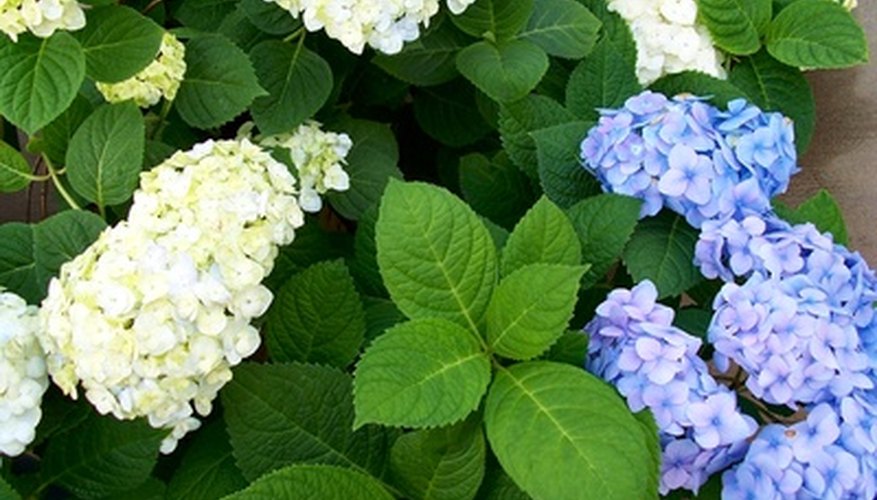Delicate puffs of pink and blue flowers dot the verdant green bushes of the hydrangea plant. This common shrub not only brings beauty to the garden, but it also has been used in alternative medicine to promote healthy kidney function. The root of the hydrangea pulls double duty both feeding the shrub and as an herbal remedy.
Root System
Hydrangea shrubs have a densely woven, fibrous root system that soaks up the moisture in the soil. The roots of the hydrangea shrub are fragile compared to trees and other larger plants, so they will often lose when put into root competition with a tree in the area. Each individual root from a hydrangea plant is fairly small, with most being smaller than the diameter of a pencil. The taproot of the plant extends down below the shrub about two thirds the height of the shrub above the ground.
- Hydrangea shrubs have a densely woven, fibrous root system that soaks up the moisture in the soil.
- The roots of the hydrangea shrub are fragile compared to trees and other larger plants, so they will often lose when put into root competition with a tree in the area.
Transplanting
Hydrangea shrubs rarely produce seeds, so getting a hydrangea on your property will involve planting an existing shrub that's is either transplanted or propagated from a cutting. When transplanting a hydrangea, dig up a generously sized root ball from the ground to allow the shrub plenty of nutrients as it acclimates to its new home. Dig out from the stem of the bush about 10 inches and cut straight down into the ground with a sharp shovel the full depth of the shovel. Continue digging at a 45-degree angle toward the middle of the plant until you reach the centre of the hole under the taproot. Lift the shrub out and wrap the root ball in cloth until you get to the new location. Dig a hole twice the width of the root ball and the full depth to plant the hydrangea in.
- Hydrangea shrubs rarely produce seeds, so getting a hydrangea on your property will involve planting an existing shrub that's is either transplanted or propagated from a cutting.
- Continue digging at a 45-degree angle toward the middle of the plant until you reach the centre of the hole under the taproot.
Propagating
Roots can grow from cuttings from a hydrangea plant. Cut a branch from the plant with two or three leaves on it. Dip the stem in root hormone, then plant the stem up to the leaf in soil and keep it watered and shaded. The roots will develop after a few weeks in a pot. Once the plant starts to produce new growth, you may transplant it into your yard. Transplant the hydrangea in spring after the last frost of the season.
- Roots can grow from cuttings from a hydrangea plant.
- The roots will develop after a few weeks in a pot.
Medicine
According to Mayo Clinic.com, hydrangea root is used in herbal medicine such as Chinese medicine for the treatment of kidney ailments, especially kidney stones. Always consult your doctor before employing alternative medicine. The size of hydrangea root dosage depends on the method of preparation. An herbal infusion with water requires 2 tsp dried root in 1 cup water boiled for 15 minutes. In a prepared syrup tincture, take 1 teaspoon full.
- According to Mayo Clinic.com, hydrangea root is used in herbal medicine such as Chinese medicine for the treatment of kidney ailments, especially kidney stones.
